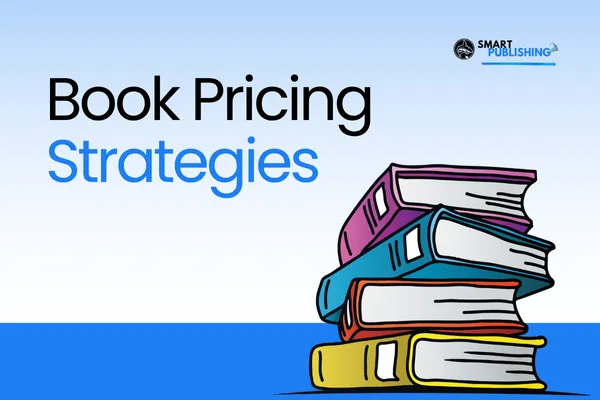
Book Pricing Strategy 101: How to Set (and Adjust) the Right Price for Your Book
Book Pricing Strategy 101: How to Set (and Adjust) the Right Price for Your Book
📘 Smart Publishing Impact Series – Episode 40
Pricing your book can feel like a guessing game. Too high, and readers hesitate to buy. Too low, and you undercut your own value—or worse, send the wrong message about your book’s quality.
In this episode, we’re breaking down how to price your book strategically, whether it’s for launch, post-launch, or special events—and why your pricing strategy should never be static.
Because here’s the truth: your book’s price is more than a number—it’s a signal.
💡 Why Your Pricing Strategy Shouldn’t Be “Set It and Forget It”
Your book’s price isn’t a one-time decision.
As the market shifts and reader habits evolve, your pricing should too. Think of it like tuning an instrument—you’ll need to adjust periodically to stay in harmony with your audience and the economy.
You should reevaluate your prices regularly based on:
How well your book is selling (or not selling)
Reader feedback and demand
Current publishing and pricing trends
Your author “clout” and genre
A flexible pricing mindset lets you experiment, learn, and stay competitive.
🚀 Your Launch Pricing: Start With a Low Barrier
Your launch isn’t the time to aim for maximum profit—it’s the time to aim for maximum reach.
At Smart Publishing, our authors typically launch their Kindle edition at $0.99. This low barrier helps push volume and visibility—especially for those trying to achieve bestseller status on Amazon.
Why $0.99?
Because it’s an easy “yes” for anyone, even readers unfamiliar with you. The goal isn’t to make money—it’s to build momentum.
If your Kindle file size is large (due to images or graphics), Amazon may require a slightly higher minimum, like $1.99, to account for digital delivery fees.
And while it’s not technically part of pricing, enrolling your book in KDP Select (so Kindle Unlimited readers can “borrow” it) is a no-brainer. It expands your reach dramatically—and yes, those reads still count toward your ranking.
💰 Post-Launch Pricing: Find the Sweet Spot
Once your launch buzz fades, it’s time to shift into sustainable pricing.
Here’s what’s working well in 2025:
For memoirs and story-driven nonfiction:
Kindle: $2.99–$5.99
Paperback: $10.99
Hardcover: $16.99
These genres perform best with moderate pricing—high enough to signal quality but affordable enough for frequent readers.
For business and professional nonfiction:
Kindle: $5.99–$8.99
Paperback: $13.99–$14.99
Hardcover: $18.99–$19.99
Readers in these genres expect to pay more for high-value information. Price too low, and they may question your credibility.
For high-clout or industry-specific books:
Kindle: $9.99–$19.99
Paperback: $24.99–$29.99
Hardcover: $30.00–$35.99
In fields like cybersecurity, medicine, or education, higher prices are normal. The higher cost signals expertise and aligns with industry expectations.
📊 The Psychology of Pricing
Readers make assumptions based on price.
If your book is underpriced for its category, it can unintentionally send the message that it’s low-quality or self-published without professional editing.
That’s why pricing should always match:
The genre standard
The professionalism of your book
Your audience’s expectations
It’s not about being the cheapest—it’s about positioning your book where it belongs in the market.
🎟️ Special Event Pricing
Your pricing strategy shouldn’t stop once your book is live.
When you’re attending conferences, speaking engagements, or book fairs, consider offering special pricing—both online and in person.
For example:
Drop your Kindle price to $0.99 the week of an event to spike sales and boost your ranking.
Bring author copies to sell at events—you can order them from KDP at cost and set your own retail price.
Offer signed hardcovers as VIP gifts for potential clients, media partners, or influencers.
Each event is a chance to refresh your visibility and bring your book back into bestseller territory.
🏁 Final Word
Pricing isn’t just about making sales—it’s about strategy.
You’re signaling value, positioning yourself in the market, and creating opportunities for your book to thrive long-term.
So don’t be afraid to experiment, adjust, and evolve your pricing as your author platform grows.
Keep writing your story—because the world needs your voice.
—Renee
